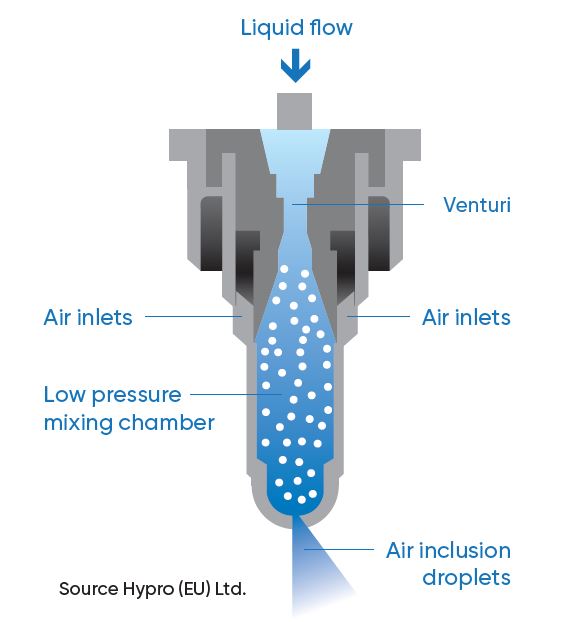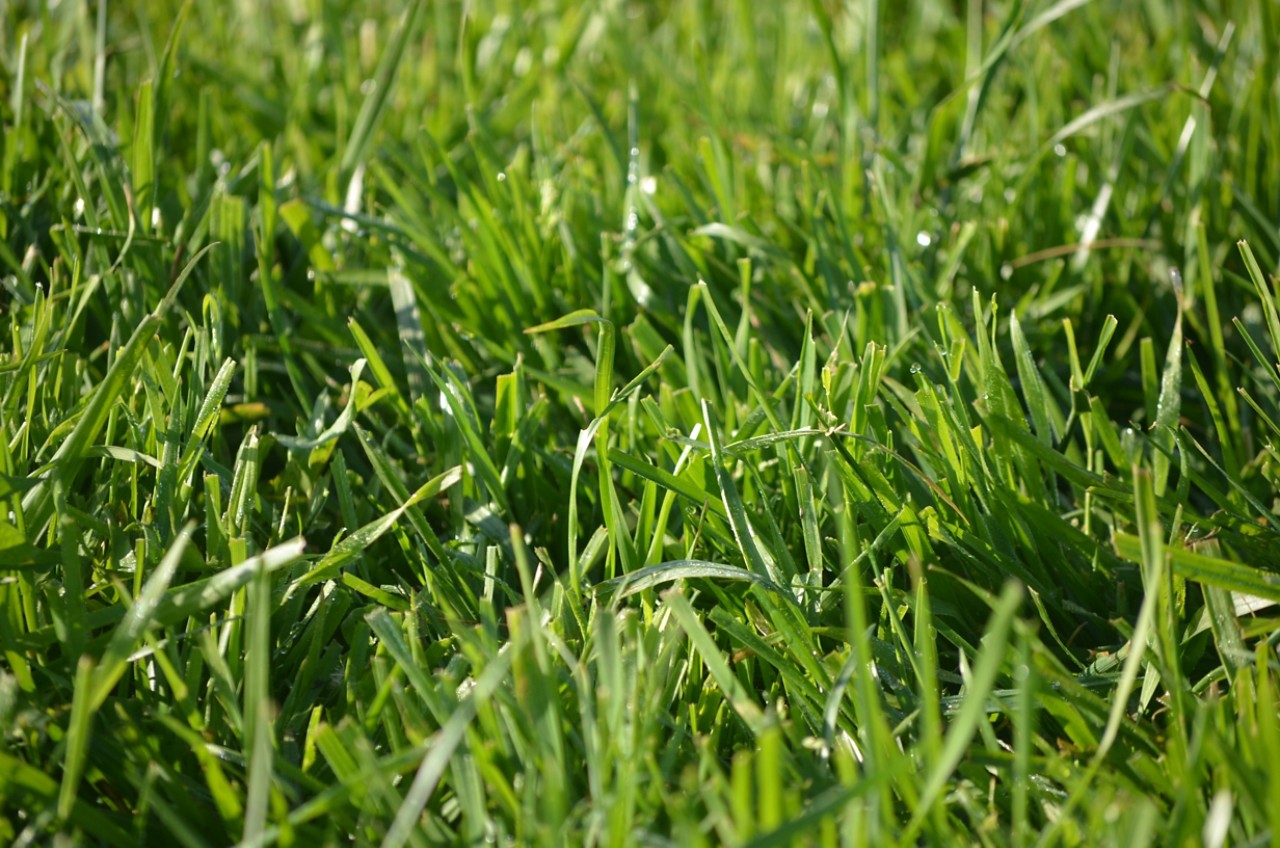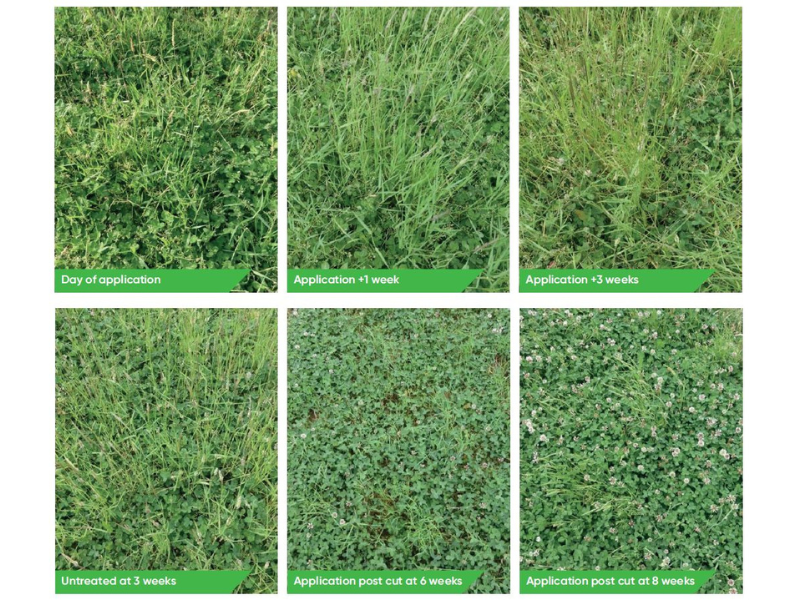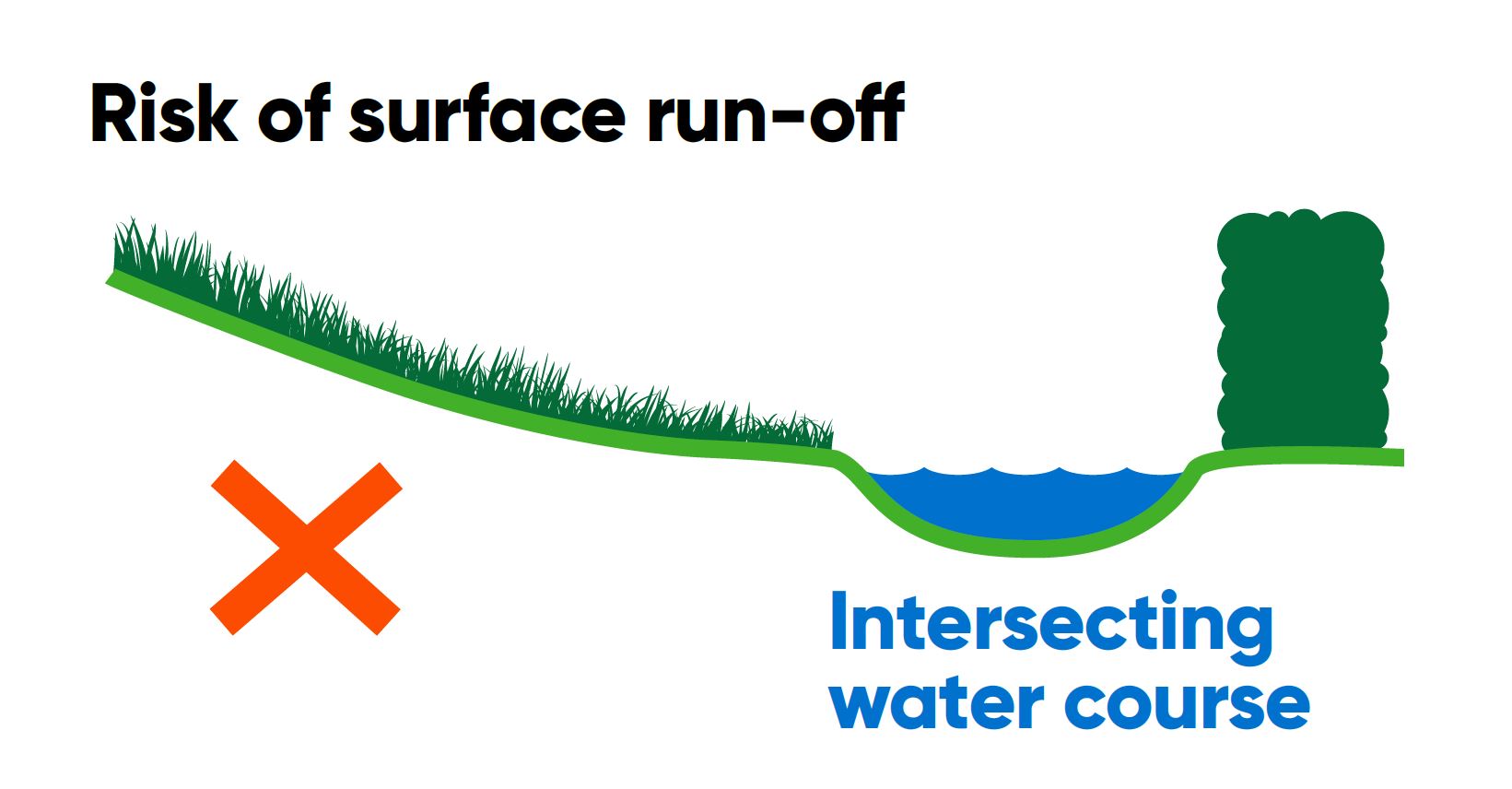Scroll down to find out how to optimise use of ProClova XL whilst protecting water. Alternatively, you can download the information in PDF format by clicking here.
Water quality
To protect aquatic organisms, farmers must follow the Best Practice Guidelines when using ProClova® XL.
Use drift reducing nozzles
- Drift reducing nozzles (minimum 75% drift reduction).
- Check the DAFM STRIPE nozzle listings at www.pcs.agriculture.gov.ie and search STRIPE (Department of Agriculture and Marine).
- Air inclusion nozzles are ideal because they create larger droplets with small bubbles of air. On impact, the bubbles burst leaving small droplets across the leaf surface for better absorption which creates less drift.
- Use a minimum of 200L water per hectare.
Avoid intersecting watercourses
- Do not apply to fields where an intersecting watercourse is present (this means where the land parcel slopes towards a watercourse and any surface water run-off would drain that watercourse).
Maintain buffer zones
- When spraying fields with watercourses respect an unsprayed buffer zone of 3 meters to the watercourses.
Drift Reducing Nozzles (DRN)
DRN is typically an air inclusion nozzle which creates larger droplets that contain small bubbles of air.
This coarser droplet enables the spray to travel accurately from nozzle to target. On impact the bubble bursts leaving smaller droplets across the leaf for absorption. This means less drift and more deposit of product on to the target leaf.
Travelling speed and water volume will determine the exact type of nozzle to use:
- ProClova XL must be applied in 200 litres water/hectare.
- Optimal travelling speed when spraying grassland is typically in the range of 8 to 10kph depending on field conditions.


Dealing with larger weeds in newly sown leys
When seedling weeds that have gone beyond the optimal growth stage for treatment, or where particularly docks are re-establishing from root fragments rather than seed, then use ‘ground cover’ to assess the feasibility of making an application of ProClova XL at the higher rate of use available for established grassland. Established grassland is defined as having more than 90% ground cover or older than 1 year, whichever comes first.
Determining ground cover
To determine ‘ground cover’, go to the Corteva Forage App. Use this link if you have yet to download it and select the ‘Ground Cover feature in the ‘Weed Control’ option.
Once a newly sown ley reaches more than 90% ground cover, it qualifies as established grassland and the higher dose rate for ProClova XL can be used.

Clover safety
Application can cause visual symptoms such as deformation and growth inhibition but symptoms are transitory with full recovery thereafter.
If applying to newly sown leys, use from tillering stage of the grass and white clover has reached the 3-trifoliate leaf stage before application
Application in the spring is recommended for quicker recovery of the clover. Cutting or grazing grass will speed up recovery process.
This timed series of photos started on 4th May and by 8 weeks and one cut, clover populations matched untreated plots.

Deciding when to ‘spray or delay’
- Do not spray if grasses have less than 3 true leaves or clover has less than 3 trifoliate leaves.
- Do not spray if rain is imminent (rain fastness is 1 hour).
- Do not spray if the 3 days previous and the 3 days after the intended spray date have or are forecast to have air temperatures which are likely to be less than 8°C. This is important to ensure optimal performance of the product and recovery of clover following an application of ProClova XL.
- It is not recommended to spray if the target dock population is diseased, under attack by dock beetle or has passed the label stated growth stage. In any of these scenarios, optimum control is more likely from spraying re-growth after cutting/topping.

